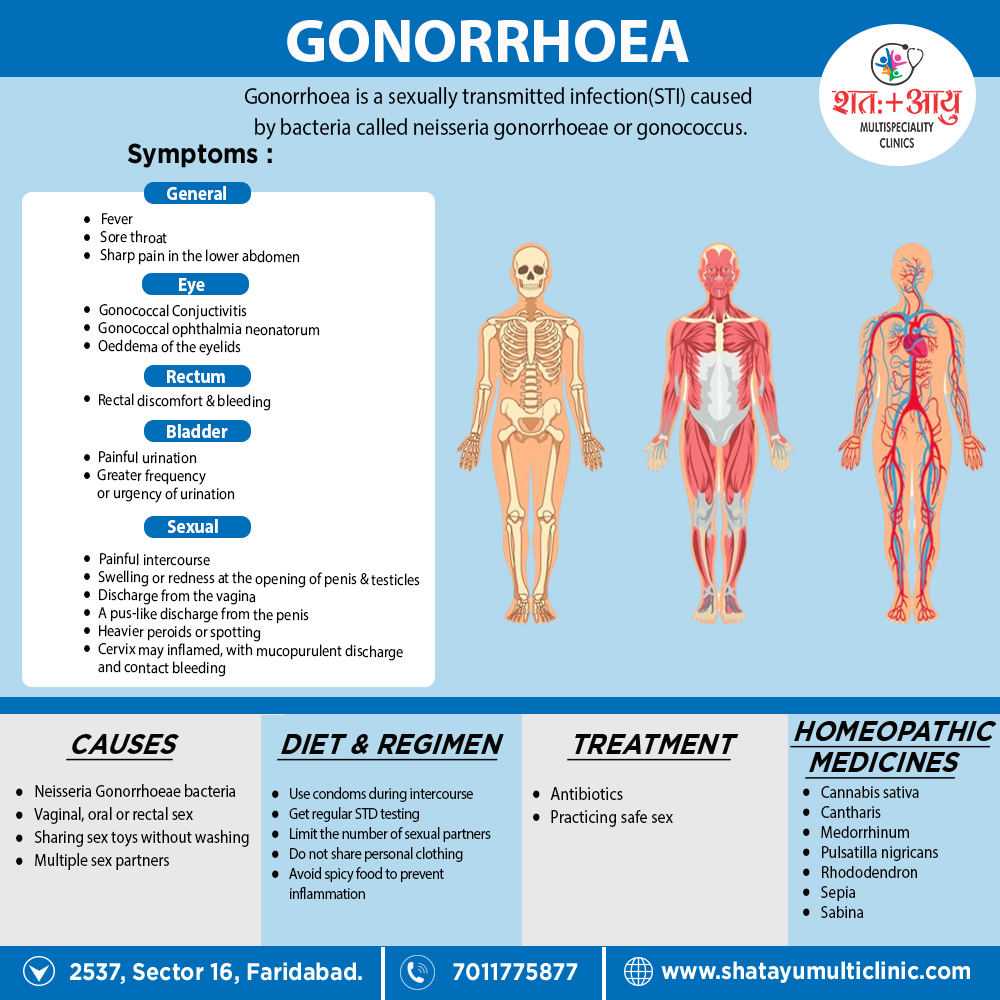The incubation period is usually 2–10 days.
Symptoms in men:
Men may not develop noticeable symptoms for several weeks. Additionally, Some men may never develop symptoms.
Typically, the infection begins to show symptoms a week after its transmission.
The first noticeable symptom in men is often a burning or painful sensation during urination.
As it progresses, other symptoms may i.e.:
- Greater frequency or urgency of urination.
- A pus-like discharge (or drip) from the penis (for example; white, yellow, beige, or greenish).
- Examination will usually show a mucopurulent or purulent urethral discharge.
- Pain may also spread to the rectum.
- Swelling or redness at the opening of the penis
- Swelling or pain in the testicles
- Rectal infection in MSM is usually asymptomatic but may present with anal discomfort, discharge or rectal bleeding.
- Proctoscopy may reveal either no abnormality, or clinical evidence of proctitis such as inflamed rectal mucosa and mucous.
- A persistent sore throat.
The infection will stay in the body for a few weeks after the symptoms have been treated.
In rare instances, gonorrhea can continue to cause damage to the body, specifically the urethra and testicles.
Symptoms in women:
In general, Many women don’t develop any overt symptoms of gonorrhea.
When women do develop symptoms, they tend to be mild or similar to other infections, making them more difficult to identify.
In detail; Gonorrhea infections can appear much like common vaginal yeast or bacterial infections.
In women, the urethra, paraurethral glands/ducts, bartholin’s glands/ducts or endocervical canal may be infected. Additionally, the rectum may also be involved either due to contamination from a urogenital site or as a result of anal sex.
Occasionally, the rectum is the only site infected.
About 80% of women who have gonorrhoea are asymptomatic.
There may be vaginal discharge or dysuria but these symptoms are often due to additional infections, such as chlamydia, trichomoniasis or candidiasis, making full investigation essential.
Lower abdominal pain, dyspareunia and intermenstrual bleeding may be indicative of PID.
Clinical examination may show no abnormality, or pus may expressed from urethra, paraurethral ducts or Bartholin’s ducts.
Symptoms i.e.:
- Discharge from the vagina (e.g. watery, creamy, or slightly green).
- Either Pain or burning sensation while urinating.
- The need to urinate more frequently.
- Heavier periods or spotting.
- Sore throat.
- Pain upon engaging in sexual intercourse.
- Cervix may inflamed, with mucopurulent discharge also contact bleeding.
- Sharp pain in the lower abdomen.
- Fever [1] [3]
Other Conditions:
Gonococcal Conjunctivitis
Gonococcal Conjunctivitis In New Born
- Pharyngeal gonorrhoea is the result of receptive orogenital sex and is usually symptomless.
- Gonococcal conjunctivitis is an uncommon complication, presenting with purulent discharge from the eye(s), severe inflammation of the conjunctivae and oedema of the eyelids, pain and photophobia.
- Gonococcal ophthalmia neonatorum presents similarly with purulent conjunctivitis and oedema of the eyelids.
- Conjunctivitis must treated urgently to prevent corneal damage.
- Disseminated gonococcal infection (in other words; DGI) is seen rarely, and typically affects women with asymptomatic genital infection. Symptoms include arthritis of one or more joints, pustular skin lesions and fever. [1]

